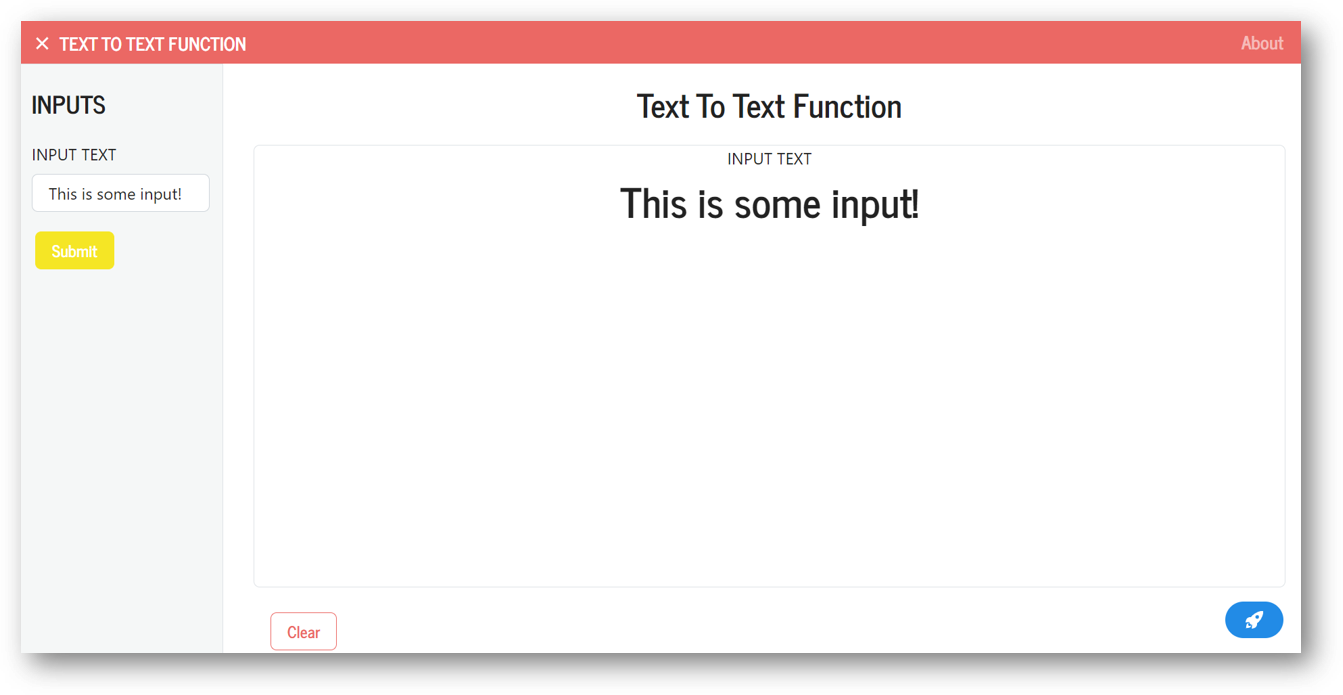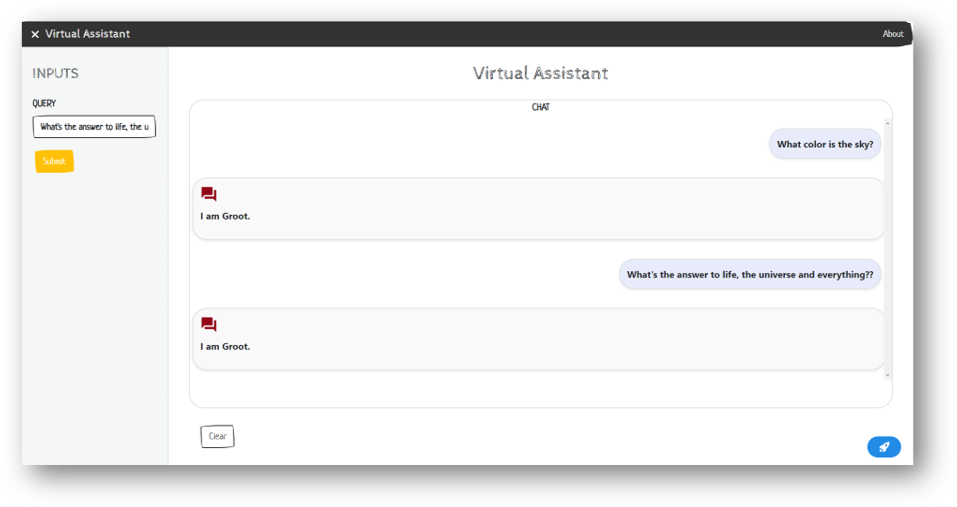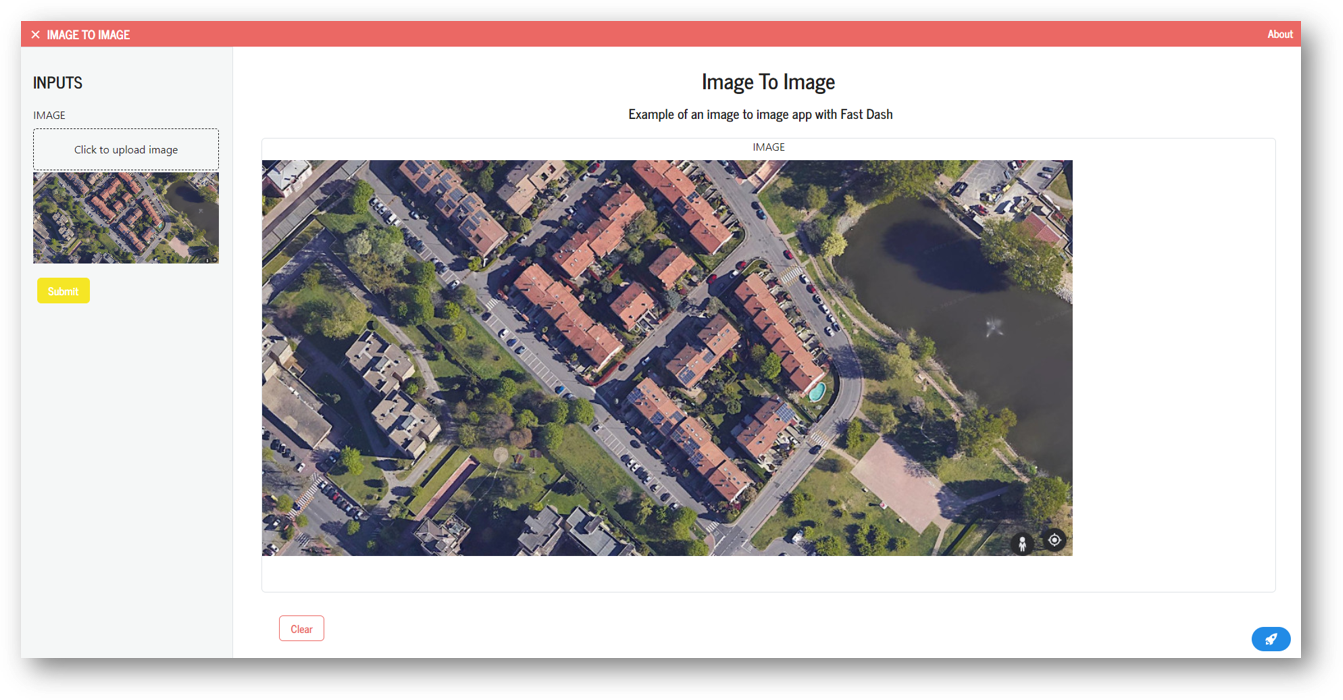Quickstart
Install Fast Dash
Let's start by installing Fast Dash:
pip install fast-dash
Simple Example
Here's the simple text to text function from the home page again.
1 2 3 4 5 | |
This should spin up your first Fast Dash app!

Chatbot example
Fast Dash also offers many in-built components to make development easier. These can be used as data type hints. Here's a dummy chatbot example.
1 2 3 4 5 6 7 | |

Image to image example
Fast Dash makes it very easy to work with different types of data types and components. For example, here's how to build an app that receives an uploaded image and returns the same image. We can, of course, write any image analysis transformation we want.
1 2 3 4 5 6 7 | |
This is how the deployed app looks:

What else is possible
There are many customizations that you can make with your app. These include:
- Choose from different themes
- Use any Dash component in your app
- Add custom branding and social media icons
- Customize pre-built components
- Live reload
- Minimal view
- JupyterLab inline and embedded views
By tweaking these configurations, you can easily build web applications for a variety of use cases!
Examples
See the examples page for more executable examples.